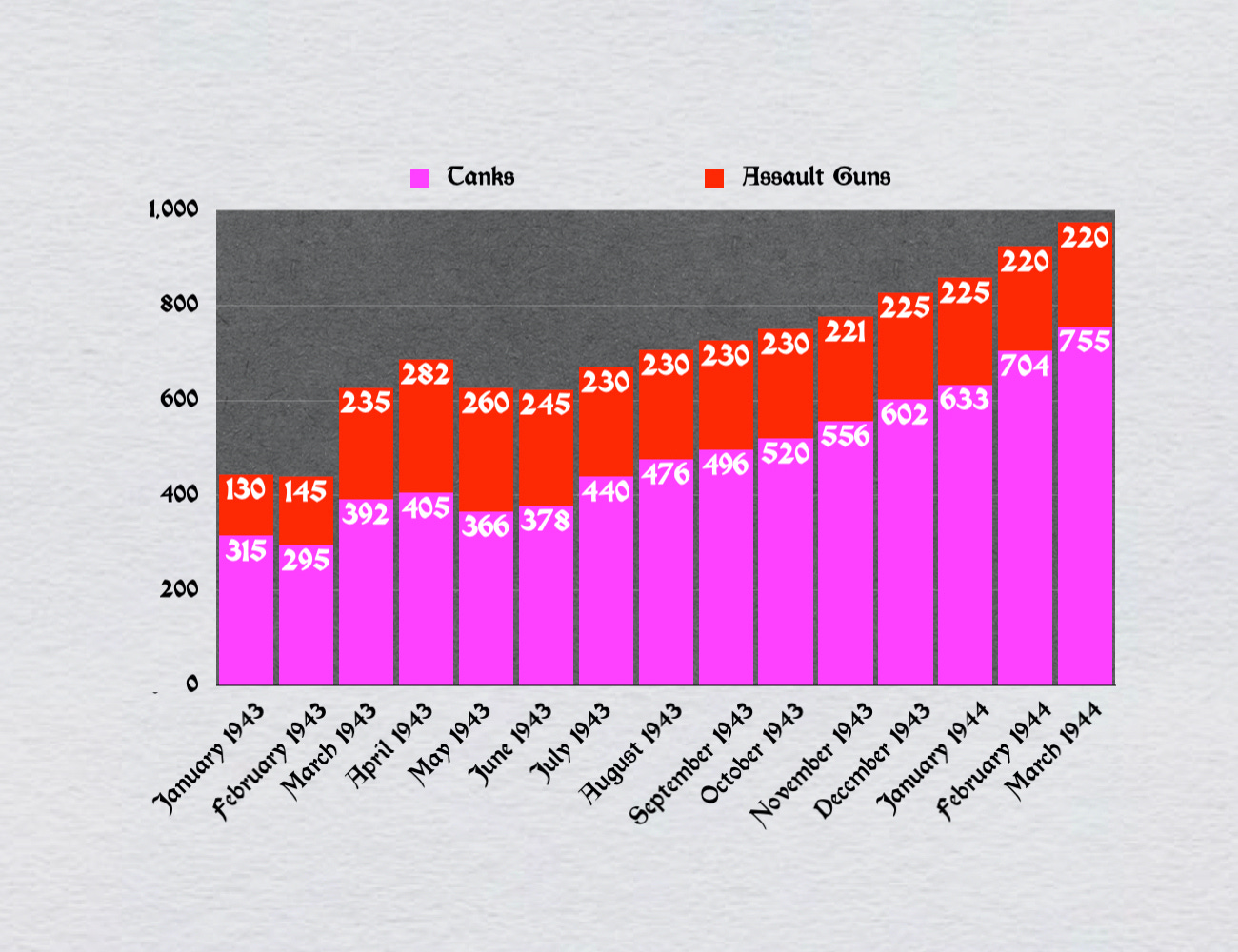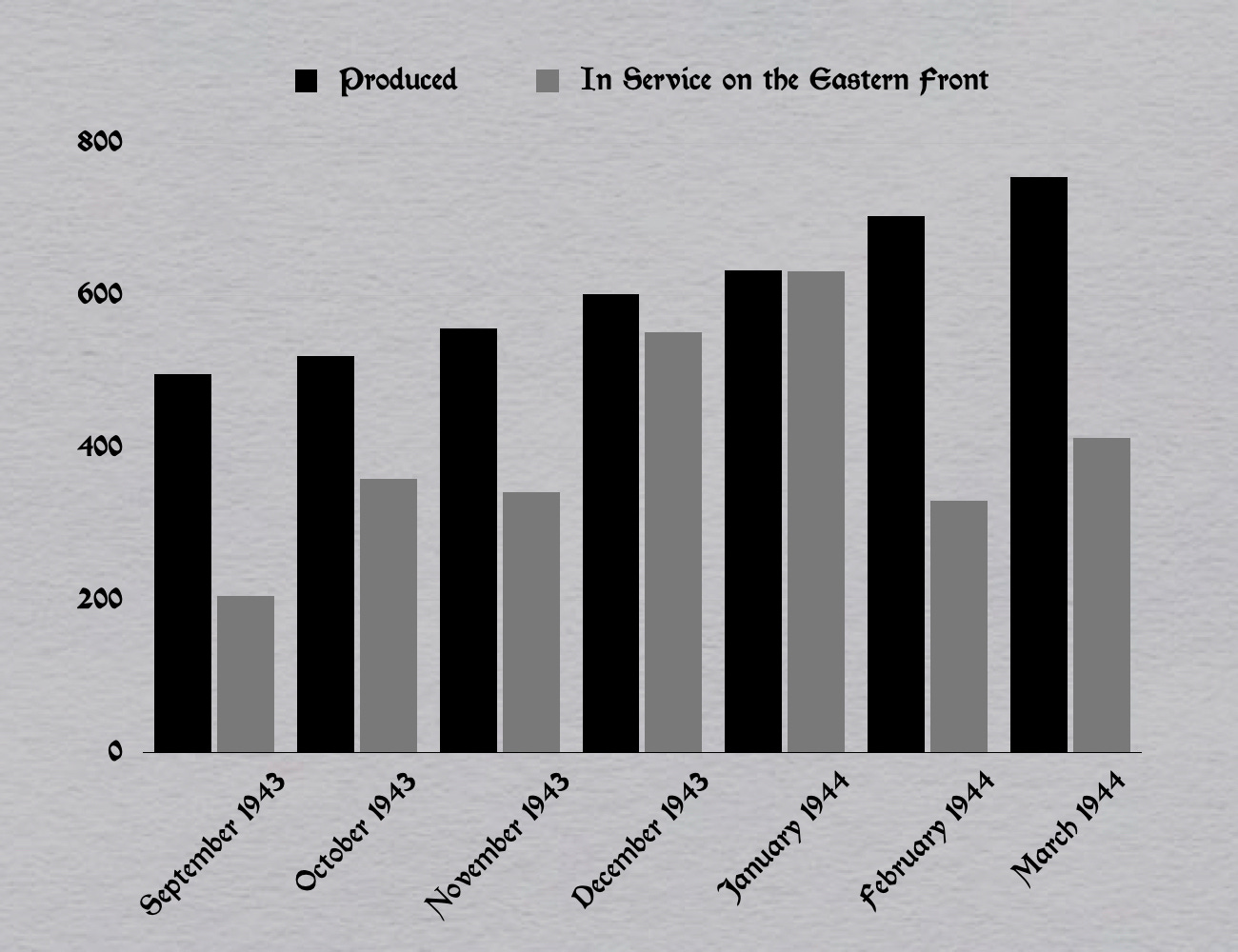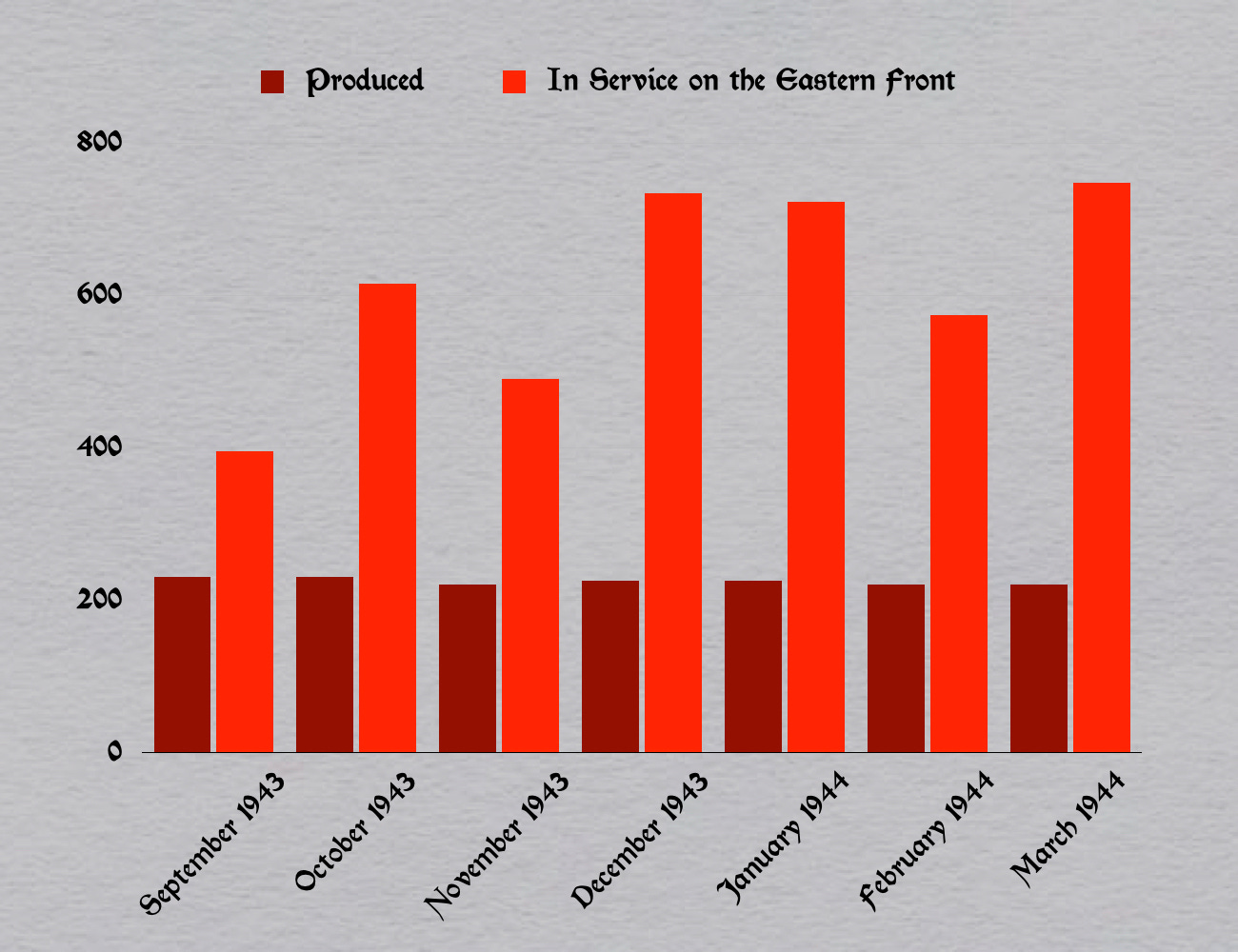A recent search in a very large library catalog tells me that, for every book that historians write about the assault guns of the German Army of the Second World War, they write fourteen about the German tanks employed in that conflict. Even if we presume that many of the books classified as works about tanks make some mention of assault guns, this imbalance suggests that turreted armored fighting vehicles played a much larger role in the German war effort than those with fixed main armament.
Two sets of figures compiled by German staff officers in 1944 tell a different story. The first shows that, between January of 1943 and March of 1944, German factories produced one assault gun for every three tanks. The second indicates that, between September of 1943 and May of 1944, the there were three assault guns serving in the struggle against the Soviet Union for every two tanks engaged in that fight.
Viewed together, these figures point to a phenomenon of far greater interest to students of tactics than the failure of historians to give assault guns their due, that of life expectancy.
Between September of 1943 and March of 1944, the number of tanks produced each month exceeded those in service on the Eastern Front. In December of 1943 and January of 1944, this excess was small. In other months, however, production dwarfed the number of tanks on hand. During the same period, the number of assault guns in service on the Eastern Front exceeded production by a factor of two or three. This meant that, while a German tank on the Eastern Front would, on average, last for less than a month, the average life expectancy for an assault gun was greater than two months.
The longer life expectancy may have resulted from the lower silhouette of the assault gun, which reduced to the size of targets presented to Soviet anti-tank gunners. It may also have been a product of the relative ease with which less-than-catastrophic damage could be repaired. The chief cause, however, may have more to do with tactics than mechanical design.
Thanks to the tradition of the Lauerstellung, and their role as tank hunters, assault guns were more likely than tanks to operate as “armored guerillas.” Thanks to their heritage as infantry support weapons, they were more likely to cooperate closely with nearby infantry units. Finally, the fact that the officers of assault gun units were fully trained artillerymen increased both their willingness and ability to work closely with field artillery units.
Sources: The production figures come from a report of the “Adolf Hitler Panzerprogramm” U.S. National Archives, Microfilm Series T-78, Roll 619. The figures for vehicles available on the Eastern Front were found in the Panzeroffizier beim Chef Generalstab des Heeres, Nr. 561/44 GK, Microfilm Series T-78, Roll 620.









With assault guns serving dutifully as infantry support and armored guerrillas against turreted assault armor, do you think we could see the use of vehicles with ATGM's and older models of tanks in a similar role?
Great post. I recently finished “Wages of Destruction” by Adam Tooze. Fascinating stories on raw materials, armament production & Speer’s Panzer program.